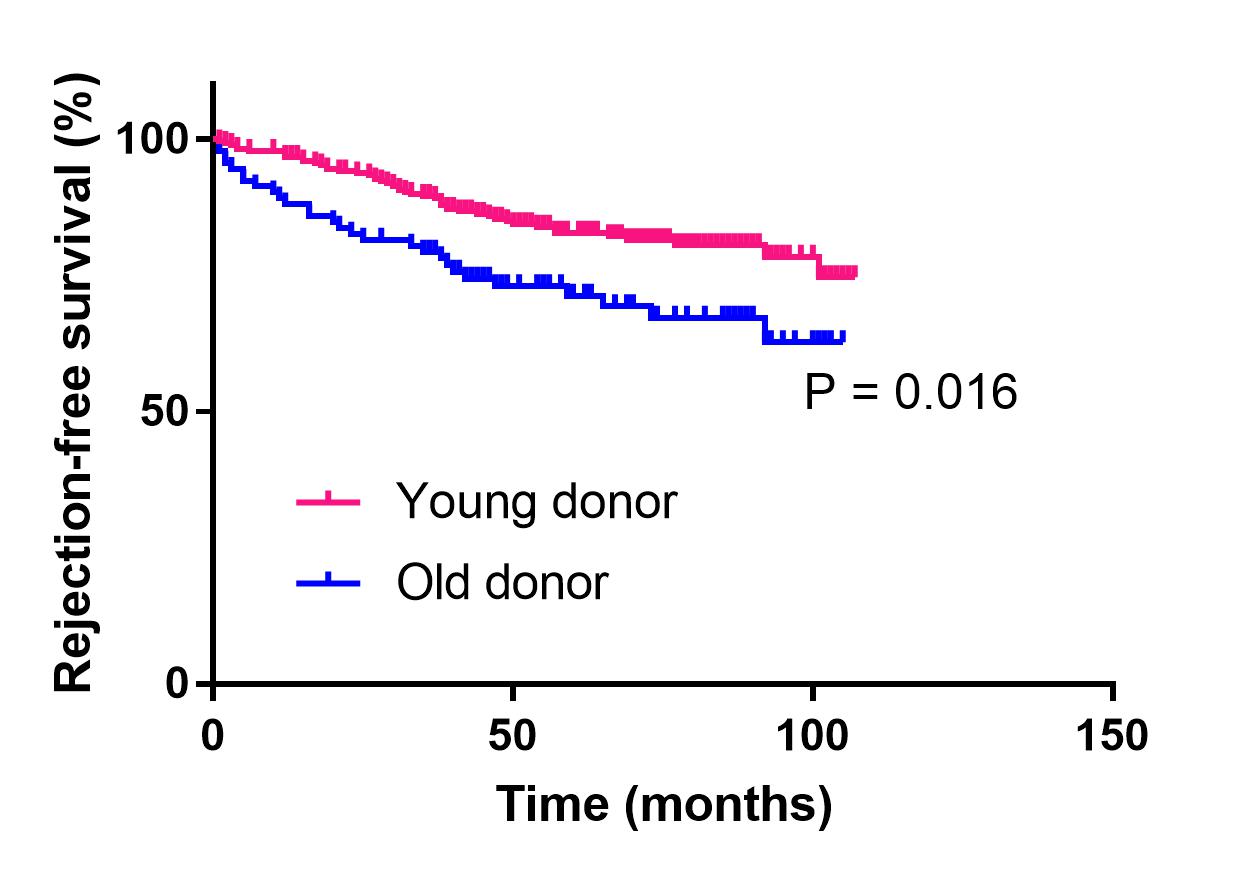Clinical and Pathologic Differences between Young and Old Living Donors in Young Kidney Transplant Recipients
Asan Medical Center, Seoul, Korea, Republic of
Meeting: 2019 American Transplant Congress
Abstract number: B163
Keywords: Kidney transplantation
Session Information
Session Name: Poster Session B: Kidney Donor Selection / Management Issues
Session Type: Poster Session
Date: Sunday, June 2, 2019
Session Time: 6:00pm-7:00pm
 Presentation Time: 6:00pm-7:00pm
Presentation Time: 6:00pm-7:00pm
Location: Hall C & D
*Purpose: Due to increasing number of patients with renal failure and lack of donors, old donors are also important contributors to kidney transplantation (KT). Therefore, we investigated clinical and pathologic differences between young and old living donors in young KT recipients.
*Methods: We reviewed KT recipients who received operation between January 2010 and December 2015. Among 1749, 374 were young (18≤age<40) recipients who received living-donor KT from old (age≥55, n=92) or young (age<55, n=282) donors. Allograft biopsies were performed when clinically indicated. We compared clinical outcomes and pathologic findings between two groups.
*Results: Graft survival and patient survival was not significantly different between young and old donors (P=0.904 and 0.520 by Log-rank test). However, rejection-free survival was better in young donor group than old donor group (P= 0.016 by Log-rank test) (Figure). In allograft biopsies, T-cell mediated rejection and calcineurin inhibitor toxicity was more frequently diagnosed in the old donor group (18.1% vs. 30.4%, P = 0.018). The incidences of antibody-mediated rejection, thrombotic microangiopathy and recurrent glomerulonephritis were not significantly different between two groups. The creatinine level on last follow up was higher in old donor group (1.12 ± 0.54 vs. 1.37 ± 0.84 mg/dL in young and old donor groups, P = 0.001). Follow up duration was 67.93 ± 24.05 months.
*Conclusions: Acute rejection, especially T-cell mediated rejection, occurred more often in old donor KT. However, old living donor showed comparable graft outcome with young living donor in young KT recipients. Therefore, old donor KT might be a reasonable option for young end-stage renal disease patients.
To cite this abstract in AMA style:
Baek C, Kim H, Lee H, Kim Y, Park S. Clinical and Pathologic Differences between Young and Old Living Donors in Young Kidney Transplant Recipients [abstract]. Am J Transplant. 2019; 19 (suppl 3). https://atcmeetingabstracts.com/abstract/clinical-and-pathologic-differences-between-young-and-old-living-donors-in-young-kidney-transplant-recipients/. Accessed December 29, 2025.« Back to 2019 American Transplant Congress

